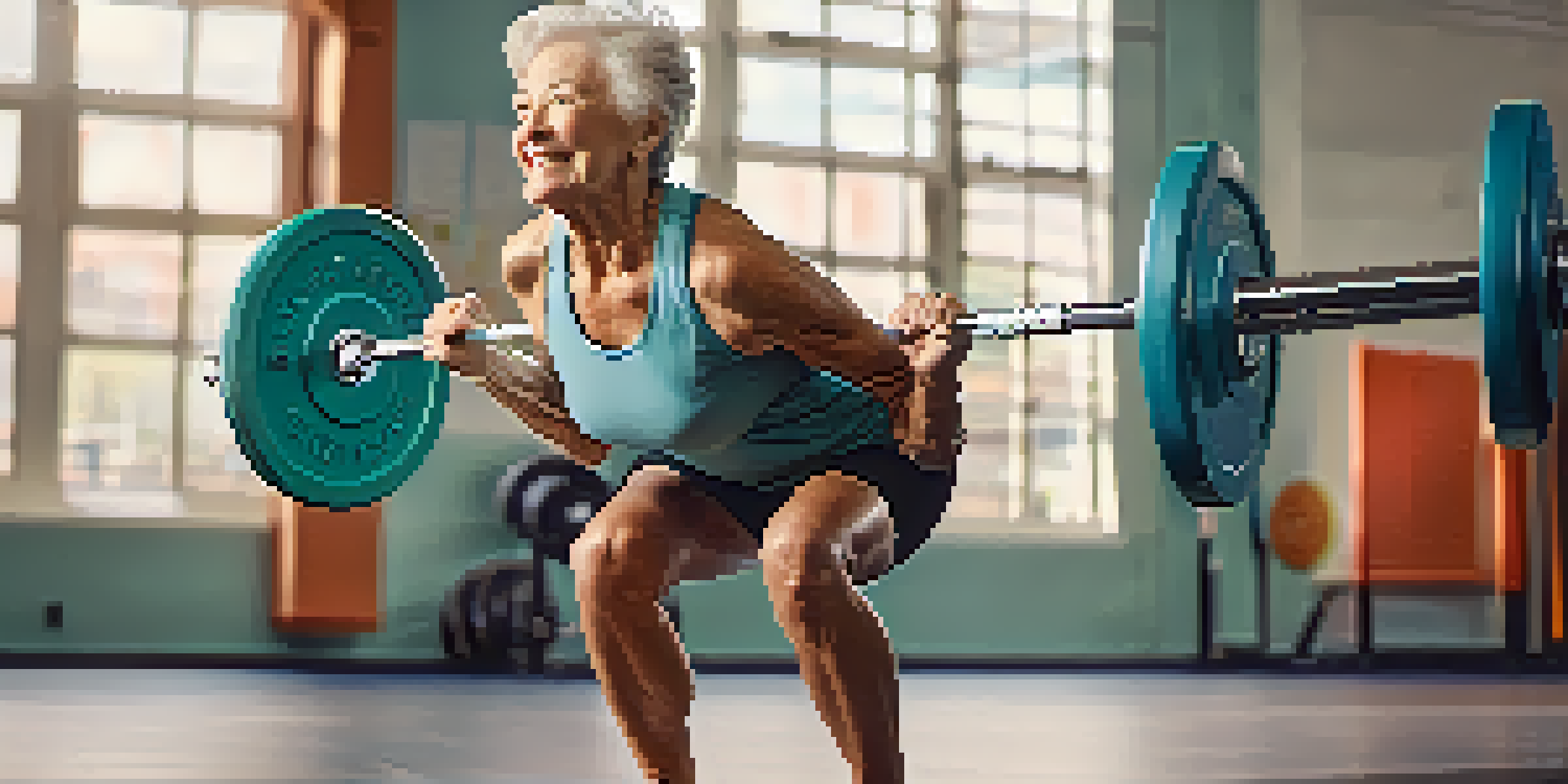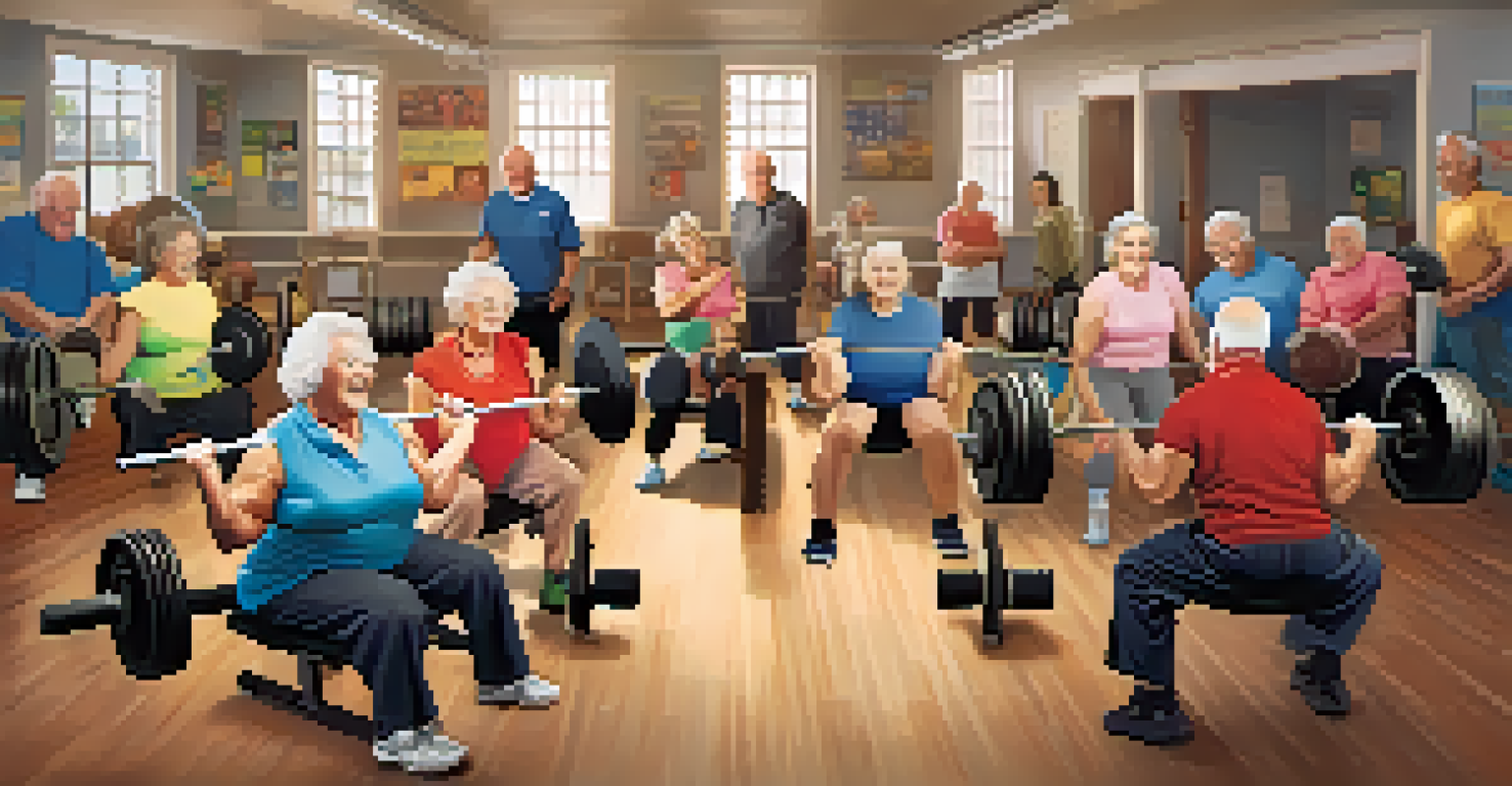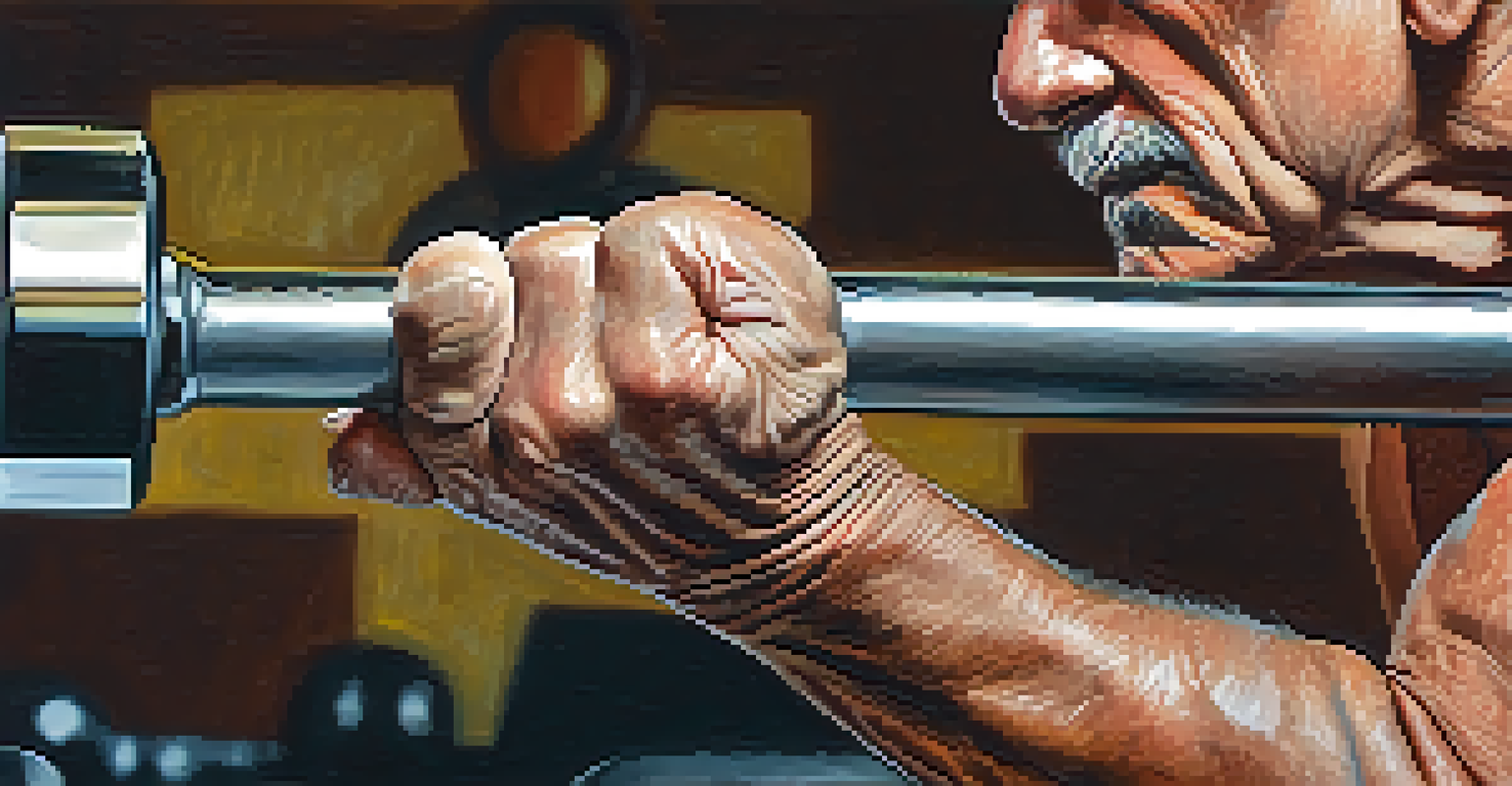Maintaining Mobility: The Role of Powerlifting in Aging

Understanding Mobility and Its Importance in Aging
Mobility is the ability to move freely and easily, which is crucial as we age. Maintaining mobility allows older adults to perform daily activities independently, from walking to climbing stairs. However, as we get older, factors like muscle loss and joint stiffness can hinder this ability, making it vital to address these changes proactively.
The secret of getting ahead is getting started.
When mobility declines, it can lead to a sedentary lifestyle, increasing the risk of health issues such as obesity, heart disease, and falls. Therefore, understanding the importance of staying active becomes even more critical in later years. Engaging in regular physical activities can help sustain mobility and overall well-being.
Powerlifting, often seen as a sport for the young and fit, can actually play a significant role in enhancing mobility for older adults. By focusing on strength training through safe and effective lifting techniques, elderly individuals can combat the natural decline in muscle mass and maintain their independence.
How Powerlifting Builds Strength and Stability
Powerlifting primarily involves three main lifts: the squat, bench press, and deadlift. These compound movements engage multiple muscle groups, promoting overall strength and stability. For older adults, building strength in the legs, back, and core can significantly improve balance and reduce the risk of falls.

With the right guidance, powerlifting can be tailored to individual fitness levels, making it accessible to most seniors. Starting with lighter weights and focusing on proper form ensures that older adults can reap the benefits without overexerting themselves. This gradual approach fosters confidence and encourages continued participation.
Mobility is Key for Aging Well
Maintaining mobility through regular physical activity is essential for older adults to ensure independence and reduce health risks.
Additionally, the emphasis on stability and control during lifts translates to better functional movements in daily life. Tasks such as getting up from a chair or carrying groceries become easier when the body is stronger and more stable. Thus, powerlifting not only builds muscles but also enhances functional strength.
Flexibility and Mobility Improvements Through Powerlifting
One common misconception about powerlifting is that it only builds strength, neglecting flexibility. In reality, powerlifting can significantly enhance flexibility when performed with proper technique and a focus on full range of motion. This is crucial for older adults, as flexibility often diminishes with age.
Strength does not come from physical capacity. It comes from an indomitable will.
Incorporating mobility training and stretching into powerlifting routines can lead to a more well-rounded fitness program. For instance, performing squats requires a good range of motion in the hips and ankles, thereby promoting flexibility in those areas. This not only aids in lifting but also helps in everyday movements.
As flexibility improves, older adults may experience less discomfort and stiffness, allowing for smoother transitions between activities. Regularly practicing powerlifting can thus contribute to a more active and comfortable lifestyle, making it easier to navigate the challenges of aging.
The Mental Benefits of Powerlifting for Seniors
While the physical benefits of powerlifting are substantial, the mental benefits should not be overlooked. Engaging in strength training can boost confidence and self-esteem, particularly for older adults who may feel vulnerable due to aging. Achieving personal records or mastering a new lift can provide a sense of accomplishment that transcends the gym.
Moreover, powerlifting promotes a sense of community and social interaction, which is essential for mental health in older adults. Joining a powerlifting group or class can foster friendships and support networks, combating loneliness. Social connections are vital for emotional well-being and can enhance the overall quality of life.
Powerlifting Enhances Strength and Stability
Powerlifting, with its focus on compound movements, significantly improves strength, balance, and functional stability for seniors.
Additionally, the focus required during lifting sessions can serve as a form of mindfulness. This mental engagement helps to reduce stress and anxiety, contributing to better overall mental health. By lifting weights, seniors not only strengthen their bodies but also nurture their minds.
Safety Precautions When Powerlifting as You Age
As with any physical activity, safety is paramount, especially for older adults engaging in powerlifting. It’s essential to consult with a healthcare provider before starting any new exercise regimen. This step ensures that individuals can safely participate without risking injury due to underlying health conditions.
Working with a qualified trainer who understands the unique needs of older adults can make a significant difference. A trainer can provide personalized guidance, focusing on proper technique and helping to create a tailored strength training program. This support is crucial in ensuring that participants lift safely and effectively.
Moreover, listening to one's body is vital. Seniors should be encouraged to recognize their limits and take breaks when necessary. Powerlifting should be a positive experience, and respecting those boundaries helps to prevent injuries while promoting a sustainable fitness journey.
Success Stories: Real-Life Examples of Seniors Powerlifting
Many seniors have embraced powerlifting, transforming their lives through strength training. For instance, consider a 70-year-old woman who began powerlifting to regain strength after a hip replacement. Within months, she not only improved her mobility but also participated in local competitions, showcasing her newfound strength.
Another inspiring story is that of a group of retirees who joined a powerlifting class at their community center. They bonded over lifting sessions, celebrating each other's progress and forming lasting friendships. This sense of community motivated them to stay active and engaged, proving that age is just a number.
Mental Benefits of Powerlifting
Engaging in powerlifting not only boosts physical strength but also enhances mental health by fostering community and self-confidence.
These success stories highlight the power of strength training in promoting mobility and enhancing life quality for seniors. Real-life examples demonstrate that it's never too late to start lifting and that powerlifting can lead to remarkable transformations at any age.
Getting Started with Powerlifting for Seniors
If you’re an older adult considering powerlifting, starting small is key. Seek out local gyms or community centers that offer beginner classes specifically designed for seniors. Many facilities have trainers experienced in working with older populations, ensuring a safe and supportive environment.
Begin with bodyweight exercises or light resistance before progressing to heavier weights. Focus on mastering the basic movements, such as squats and deadlifts, which form the foundation of powerlifting. Consistent practice will help build strength and confidence over time.

Lastly, remember that powerlifting is a journey, not a race. Celebrate each milestone, no matter how small, and enjoy the process of getting stronger. With patience and dedication, powerlifting can be a rewarding path to maintaining mobility and enhancing overall well-being as we age.